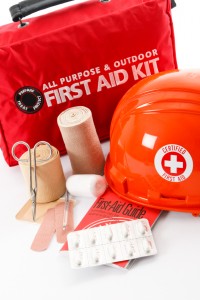Disaster Prep for Families
When you read most survival articles and manuals, the information tends to steer toward the adult segment of the population. Of course, we all know that it’s not just the adults that need to know what to do in a survival situation, and you can’t only prepare your home and survival shelter for the adults. You also need to think about and plan for kids in the family as well. Let’s start with the very basics, and then we will go into the various age groups and some of the things you’ll want to consider with each of them.
The Basics
First, you need to make sure your kids always feel safe, and you have to make it seem as though you are always in control, even in the middle of a disaster. If you panic, then they will panic. Make sure everyone in the family knows of at least three safe places where you can plan to meet with one another in the event of a disaster, and make plans for how you will contact each other.
Consider all of the different possible disaster scenarios that could affect you as well, such as earthquakes, floods, hurricanes, and more. If the kids are in school, then the plan will be different from the middle of the summer or the middle of the night, for example. Have a plan for each of these scenarios, and make sure the kids from adolescents up to teens understand that plan. The infants and toddlers will likely be with you or another adult to keep them safe. Remember, thousands of kids and parents were separated for weeks after #HurricaneKatrina.
Infants and Toddlers
Caring for a baby can make a disaster feel even more stressful, but you can take steps to make it a bit easier. If you use babysitters, make sure they have numbers where they can reach you in the event of a disaster. Make sure you have extra copies of the baby’s medical records. Just as you have your own disaster bag or bug-out bag, you need to have one for your baby as well. It should include all of the essentials such as diapers, clothes, toys, blankets and carriers. You might even want to have a portable crib. Toddlers will also need clothes, toys and blankets.
Make sure you have the essential medicines, thermometer and foods for your infants and toddlers as well. Pack bags that are similar to your own, but geared toward the little ones.
Adolescents and Teens
Older children in the family will have a better idea of what is happening in the disaster, but you can be sure they will need just as much reassurance and support as the little ones. This age group needs their own disaster preparedness bags and kits as well, but let them help create it. They can have a number of things to keep them busy and active, such as some reading material for long stretches of downtime. They also need their own clothing, medicine and perhaps some food or snacks just for them to make them feel more comfortable. One of the benefits of older kids in a disaster is that they will be able to help with some of the tasks, such as caring for the younger children.
It is important that you talk with your kids about the possibility of various types of disasters. You don’t want to scare them. However, you do want them to be ready in the event of an unforeseen disaster. Preparedness is always the key to surviving.
Resource: http://www.dhs.gov/how-do-i/prepare-my-family-disaster



No comments yet.